Secure Your Rugged Android Phones in the Field
We have seen corporate going for mobile workforces in today's “connected” society, especially for businesses out in the field, such as construction, logistics, and manufacturing. Workers in these fields are equipped with rugged Android phones to communicate, collaborate, and complete tasks efficiently, no matter where they are.

However, these gadgets also bring new challenges to businesses, in terms of rugged device management and security issues. This is why we need to set up hardy security protocols for the device fleet.
In this article, we will walk you through what are the features for rugged Android phones, their potential security issues, and how Mobile Device Management (MDM) solutions can address these challenges.
- Part 1 : Understanding Rugged Android Phones
- Part 2 : Exploring Top Rugged Android Phones for Your Workforce
- Part 3 : The Challenges of Security Issues with Rugged Android Phones

- Part 4 : The Role of MDM Solutions in Rugged Device Management
- Part 5 : How to Secure Your Mobile Workforce with MDM?
- Part 6 : Final Thoughts
Part 1. Understanding Rugged Android Phones
Different from rather fragile consumer smartphones, rugged Android phones are designed to function under harsh working environments. These are perfect tools for outdoor workers and industrial laborers, offering durability and resilience. In fact, we have come up with some features that perfectly define a rugged Android phone:
Durability and Impact Resistance
Rugged phones are made to withstand impact and falls onto hard surfaces or bear weight pressure. They have shatterproof screens, rubberized exteriors, and shock-absorbing internal components, which help these phones survive the hardest fall with minimum damage.
Water and Dust Resistance
These devices are proved to resist dust and water intrusions with high ratings of Ingress Protection (IP). A common IP68 rating among rugged phones signifies total dust protection and water resistance up to specific depths. The two numbers relate to either solids or liquids. Here, the ‘6’ relates to solids and indicates that the phone can withstand small dust particles such as sand and dirt. The ‘8’ on the other hand means that the phone is water resistant up to 1.5m for 30 minutes.
Other features
Rugged devices also come equipped with features such as glove-friendly touch screens, loudspeakers for noisy surroundings, and longer battery life.
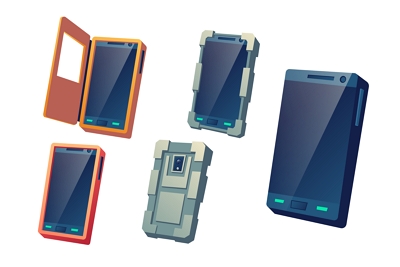
Part 2. Exploring Top Rugged Android Phones for Your Workforce
As the demand to build an agile and productive workforce grows, many popular brands have provided great rugged Android phones to meet this need. Below are some of the most popular rugged models from two of these brands:
Samsung rugged smartphone
Samsung is among the smartphone market's largest and most widely acknowledged names. Samsung boasts a range of rugged phones hailed for their high quality and refinement. One of the most durable Samsung phones is the Samsung Galaxy XCover Pro. Designed for harsh environments, its key features include:
- ● IP68 Rating: Confirms water and dust resistance.
- ● Drop Resistance: Built to withstand falls up to 1.5 meters.
- ● Samsung DeX: Provides a desktop-like experience.
- ● Resilient Touchscreen: Works even when wet or with gloves.
- ● Replaceable Battery: Prolongs the life and practical use of the phone out in the field.
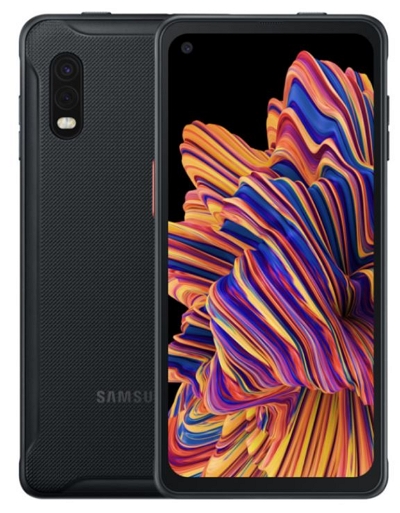
Rugged Motorola phone
Motorola is another highly reputable brand and has made leaps and bounds in the rugged smartphone market. One of their most impressive products is the Motorola Defy. Key features include:
- ● IP68 Rating: Guarantees resistance to water and dust.
- ● Military Standard 810H: Verifies the ability to withstand extreme temperatures, vibrations, and salt fog.
- ● Drop Resistance: Engineered to endure falls and spills.
- ● Resilient Touchscreen: Works even when wet or with gloves.
- ● Glove and Wet Touch Screen: Designed for use in any weather and working conditions.
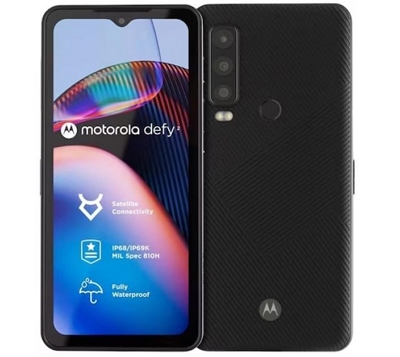
Other brands
Other brands offer rugged Android phones besides the popular ones. Sonim has designed the ultra-durable XP8, boasting several important and key defining features:
- ● Military Specs: Exceeds standards for impact, vibration, and temperature resistance.
- ● Loud Audio: Ensures clear communication in noisy settings.
- ● Long Battery Life: Supports extended use in demanding conditions.
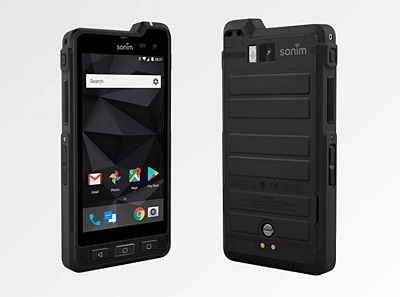
CAT Phones is another brand known for its rugged phones, with great reputation as a leading manufacturer of construction and mining equipment. Their CAT S61 stands out because of the following unique features:
- ● Thermal Imaging: Ideal for diverse field operations.
- ● Air Quality Sensor: Monitors environmental conditions.
- ● Laser-Assisted Distance Measurement: Aids in field measurements.
- ● Durability: High dust and water resistance, drop-proof construction, and a Gorilla Glass screen.

Part 3. The Challenges of Security Issues with Rugged Android Phones
Rugged Android phones help employees communicate better across departments, access important data, and get their jobs done more efficiently in challenging environments. However, adopting a mobile workforce also presents unique security challenges. In field operations, data protection is paramount. The importance of addressing these issues is highlighted in IBM’s 2022 cost of data breach report where the average cost of a data breach worldwide in 2022 has risen to a hefty $4.35 million, a 2.6% increase from the previous year. Some of these key issues include:
1Physical Loss or Theft
The very nature of fieldwork leads to a greater risk of devices getting lost, misplaced, or stolen. Without proper device protection, unauthorized users can easily gain access to sensitive company data, causing data leakage.
2Inadequate Authentication
Another hurdle for businesses is the need for stronger verification methods. Devices that rely on simple passcodes or patterns are vulnerable to unauthorized access. Suppose a device falls into the wrong hands. In that case, it's often easy for malicious users to guess or bypass weak authentication measures.
3Outdated Operating Systems
It can be quite challenging for IT admins to keep every rugged Android phone in the field updated with the latest software or applications. Outdated operating systems can expose devices to potential exploits, as they may lack the security patches to prevent hackers from using it as an entry point.
4Lack of Device Encryption
Without encryption, the data saved on mobile devices is unfortunately at risk. If a device gets lost or stolen and it has not been encrypted, then unfortunately there’s a risk anyone can access the data. This endangers sensitive company information and could result in severe breaches of confidentiality.
5Malicious Apps and Downloads
Android's open nature makes it a frequent and vulnerable target for potentially hostile apps and downloads. After installation, these can potentially harm your device, extract sensitive data, or take unauthorized remote control. Employees may inadvertently download malware disguised as legitimate apps or click on malicious links sent through email or messages.
Given these potential threats, it's clear that rugged Android phones used in field operations need secure solutions to protect not just the device but the valuable data they contain. This is where MDM solutions come into play, offering various security features to mitigate these challenges, from enforcing strong authentication and encrypting data to managing updates and controlling app installations.
Part 4. The Role of MDM Solutions in Rugged Device Management
MDM solutions are commonly used in business scenarios to manage and secure their fleet of devices with minimum time and effort. Some popular features include:
- ● Centralized rugged device management
- ● Remote troubleshooting
- ● Enforce security policies
- ● Control application installations
- ● Handle updates to ensure devices run on the latest, secure software versions
Besides security policy, MDM also provides additional layer of security with data encryption and remote data wipe, helping organizations to carry out mobile field operations and protect important data.
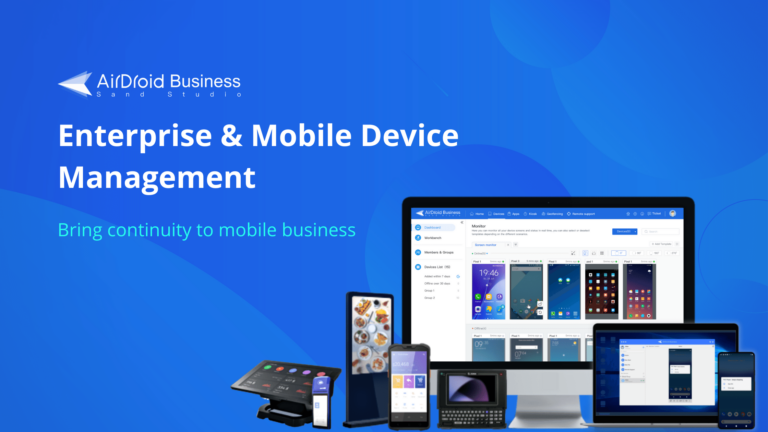
Part 5. How to Secure Your Mobile Workforce with MDM?
There are, of course, several practical steps that can maximize effectiveness and enhance device security when implementing MDM solutions. The simple practical steps include the following:
Security Policy Enforcement
The initial step is to set up robust security protocols. These include strong passwords, mandatory password updates, and establishing regulations for unsuccessful login attempts. An MDM solution can enforce these policies across all devices, ensuring uniform compliance. Most importantly, you should also educate your field workers about these policies, explaining their importance and how to follow the regulations.
Remote Device Management
Ultimately, this function allows you to easily manage the device's settings, add or remove applications, secure devices, and even solve key problems from a distance. This becomes particularly valuable when devices are out in the field, minimizing the need for on-site maintenance.
Application Management
MDM solutions can help manage the applications on your rugged Android phones. You can establish a whitelist of approved apps to only have necessary and secure apps installed on corporate devices. MDMs can also automate updates, making sure that apps are always up-to-date and reducing security risks associated with outdated software.
Furthermore, MDMs offer a 'Kiosk Mode' feature, which locks a device into a single or set of specific apps. This function is handy for limiting device use to business-essential applications, preventing unauthorized network access and reducing IT staff workload.
Data Protection
Leverage the data security attributes of your MDM solution. This incorporates data encryption, which safeguards data against unauthorized users, including:
- ● Full encryption for all data exchanges and file transfer.
- ● Encryption using Transport Layer Security (TLS).
- ● Enforce security policies
Lost or Stolen Device Management
Always have a back-up plan when your devices are lost or stolen. Use the MDM's ability to locate devices through geofencing and tracking. Suppose a device is confirmed lost or stolen. In that case, you can remotely lock it or wipe sensitive data to prevent unauthorized access. Some MDMs even offer "Application Data Loss Prevention Policy," wiping only specific app data while leaving the rest untouched.
Part 6. Final Thoughts
In our increasingly connected age, securing your mobile workforce and the data it contains has become more vital than ever. Rugged Android phones, particularly from top brands like Samsung and Motorola, offer an effective solution with enhanced durability and usability. However, in our increasingly connected age, hardware resilience alone is not enough to secure your data. Threats such as physical loss, outdated systems, lack of encryption and malicious apps can be harmful to your organization.
MDM solutions bolster application management, facilitate data encryption, and ensure secure data transmission. Attributes such as app whitelisting, automatic updates, and the inclusion of a 'Kiosk Mode' enhance both security and usability.
Therefore, don't hold off until a security issue occurs before taking a preventative measure. Explore how MDM solutions can help secure your mobile workforce and offer robust protection against field operation threats.





Leave a Reply.